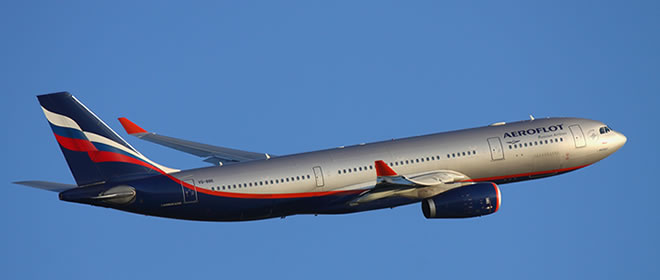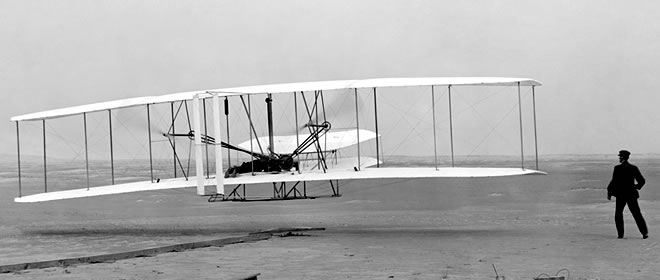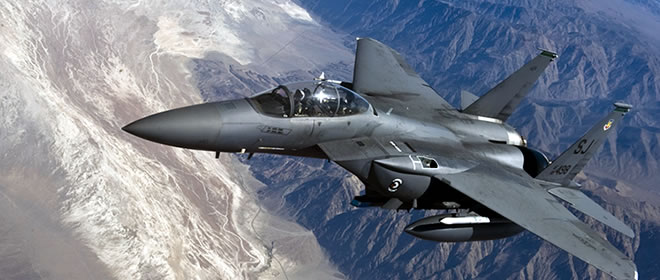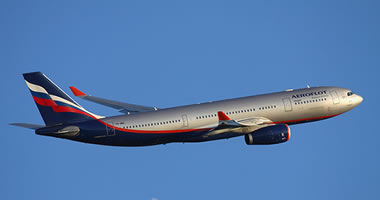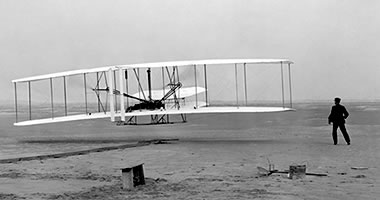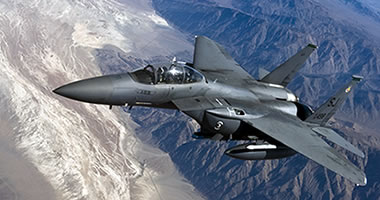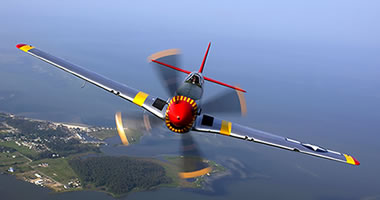Coventry Airport
COVENTRY AIRPORT: Civil municipal aerodrome, later military aerodrome later civil regional airport
(Previously known as BAGINTON, (up to the early 1960s at least), and in 2004 referred to officially as WEST MIDLANDS INTERNATIONAL AIRPORT)
Note: This picture was kindly provided by Mr Michael T Holder, a great friend of this 'Guide' and shows the proximity of the original WHITLEY ABBEY private aerodrome, operated by Armstrong Whitworth, to their later site at BAGINTON.
The second photograph, purchased as a postcard and taken by Carl McQuaide, shows the Vickers 953C Merchantman, (probably G-APEM?), a cargo variant of the Vanguard airliner, being operated by DHL. The third picture, an aerial view, was obtained from Google Earth ©
ICAO code: EGBE IATA code: CVT
Military user: WW2: RAF Fighter Command 26 Group
Operational (Satellite)
308 (Polish) Squadron (Hawker Hurricanes, later Vickers-Supermarine Spitfires)
605 Sqdn (Hurricanes)
Operated by:
1965: Corporation of Coventry
1980s/1990s: Coventry District Council
2000: West Midlands International Airport Ltd
The German TUI concern took over in early 2004.
Manufacturing: Armstrong Whitworth from….to…..?
Activities: Airline, air freight, charter, GA business, private, training and maintenance
Note: All pictures by the author unless specified.
British airline users: Air Atlantique (aka Atlantic Air Transport) , Air Safaris, British Midland Airways, British World Airlines, Channel Express, Don Everall (Aviation), Emerald Airways, Janus Airways, Jersey Arlines, Thomson fly
Foreign airline users: Air Exports, European Air Transport (Eurotrans), Ratioflug Luft (Batman), Wizz Air
Air cargo: Air Atlantique, Channel Express, DHL, West Atlantic
Car ferry: British United Air Ferries?
Charter, air taxi: Pre 1940: By Air
Post 1945: ACE Freighters, Air Atlantique, Air Commuter, Air Lloyd, Alidair, Air Transport, British Air Ferries, Central Air Services, Dollar Air Services, Eros Airlines, Executive Air Transport, Hot Air, Janus Airways, Midland Air Cargo, Orion Airways, Overseas Airlines, Pegasus Airlines, Phoenix Air Cargo, Solair Flying Services, Trans European Aviation, (later Trans European Airways)
Film company: Visionhire International
Flying club/school: Pre 1940: The Sir W G Armstrong Whitworth Flying Group
Post 1945: Almat Flying Club, Atlantic Flight Training, AWA (Armstrong Whitworth Aviation) Flying Group and/or Flying Club, (aka Sir W G Armstrong Whitworth Flying Group? Operating the Proctor G-AHBD), Armstrong Siddeley Flying Club, Coventry Flying School, Coventry Aeroplane Club, Midland Air Training, Solihull Flying Club, West Midlands Police Flying Club
Note: In the 1957 The Aeroplane directory, Coventry Aeroplane Club are listed as operating: One Auster Alpha, (possibly a J/1N?), and two DH89A Tiger Moths.
1959 ‘snapshot’: A.S. Flying Club, Armstrong Siddeley Flying Club, Coventry Aeroplane Club, GEC (Coventry) Flying Group, Sir Armstrong Whitworth Flying Group
Note: In the 1957 The Aeroplane directory, there was also listed the A.S. Flying Club and membership was restricted to Armstrong Siddeley employees. It appears they were operating a single Tipsy; possibly a Tipsy Belfair perhaps, or a Typsy B? But, this was a seperate entity to the Sir W. G. Armstrong Whitworth Flying Club.
Microlight flying school: Skyrider Aviation (1988 to 1989)
Gliding: Post 1945: Coventry Gliding Club (1953 until 1964)
Helicopter ops: Central Helicopters, Dollar Air Services, Flightworks (Midlands), Helicentre Aviation
Maintenance: Post 1945: Alvis later Alvair, Atlantic Aero Engineering, Executive Air Transport, Light Aircraft Servicing
Location: 3 nm SSE of Coventry
Period of operation: From 1920? Became the municipal aerodrome in 1934 later to become the present day international airport. Closed by the CAA in December 2009, flying suspended with the possible exception of the air ambulance service? (this note made 08.12.09). Presumably re-opened? I later learnt that private flying did continue which of course is perfectly legal at a non-licensed site
Note: These maps are reproduced with the kind permission of Pooleys Flight Equipment Ltd. Copyright Robert Pooley 2014.
Runways: Originally all-over grass airfield?
WW2: NE/SW 1581 grass N/S 1234 grass NW/SE 969 grass
1965: 06/24 1615x46 hard 07/25 1402 grass 11/29 975 grass
14/32 914 grass 17/35 945 grass
1990: 05/23 1615x46 hard 17/35 815x30 grass
05/23 515x30 grass
2000: 05/23 1825x46 hard 17/35 712x30 hard
Unusual FATO helicopter runway: 06/24 100x23 grass
NOTES: There is an astonishing difference comparing a 1990 flight guide to those published in 2000/2001. I cannot quite believe that a new 17/35 hard runway had fairly recently been constructed (in the 1980s?) and yet a 1990 flight guide shows nothing - although the location of a disused hard runway appears shown on countless airfield maps. I seem to recall Air Atlantique aircraft parked on what I presume was the northern end of the 17/35 hard runway when flying in during 1992? Also, the long displaced threshold for runway 35 is a classic example of part of a previously much longer runway existing.
When attempting to gain my PPL COVENTRY was the first point of call for my solo cross-country navigation examination, SYWELL was the second, and I have no recollection of another hard runway. This said the level of concentration involved was such I doubt I could remember my name, let alone spell it! I do remember walking across to some spotters to ask if they could point out where the grass taxiway was which I needed to use when departing on runway 23. Very happy days though.
Also, the 17/35 grass runway shown in 1990 is in another position on the airport compared to the hard runway. And the 06/24 FATO helicopter runway is in an entirely different location to the 1990 05/23 grass runway. In the 1990 flight guide a helicopter training area is shown to the N/NE of the main hangar complex.
ARMSTRONG WHITWORTH
The main factory was located a short distance away, at Whitley Abbey which originally had its own rather small aerodrome. When, with WW2 approaching it was realised this couldn't cope with the demand for more space the BAGINTON site was acquired. It believe that after the BAGINTON facility was opened it was used for final assembly and flight testing. Most of their Whitley bombers and subsequent versions appear to have been assembled here. However, the first flight of the Whitley did not take place here as many people claim. It actually took place at nearby WHITLEY, (or WHITLEY ABBEY), and which this aircraft was actually named after!
Some also claim that in the mid 1920s Armstrong Whitworth were making the Atlas and Argosy here, but surely that cannot be correct?
WORLD WAR TWO NOTE
It appears that US Army Air Force records show WW2 activity near Coventry but was this undertaken at BAGINTON?
ARMSTRONG WHITWORTH MOVE OUT
In 1954 BAGINTON was claimed as then being the largest grass airfield in the UK. At around this period the Sir W G Armstrong Whitworth company were operating a small ‘in house’ fleet of aircraft. The Avro Anson G-AHYN and Dragon Rapide G-AEML seem certain, but, although the Proctor G-AHBD is also added it seems this aircraft was also available for use by the Sir W G Armstrong Whitworth Flying Group?
However, it appears that Armstrong Whitworth tried to make a deal with Coventry Council to construct a hard runway, but this fell through. Hence the move to BITTESWELL in LEICESTERSHIRE.
FIFTY YEARS OF FLYING
On the 18th June 1954 the ‘Fifty Years of Flying’ display was held. With many notable aircraft on show and flying including the Blackburn Monoplane (Replica?), Sopwith Pup and Bristol Fighter. Four Canberras from 10 Squadron did a formation flypast and the Hurel Dubois HD.31 flew in! Unfortunately they couldn’t get the engine of the Miles Sparrowjet G-ADNL started.
The following year, 1955, COVENTRY/BAGINTON hosted both the Lockheed Aerobatic Trophy and Kings Cup Air Race. Further major displays followed over the years such as the 60th Anniversary of the RAF, Coventry Air Pageant on the 12th August 1967 and Coventry Air Day on the 13th August 1978. And many other events since.
AIR RACING
For the first time since the annual King’s Cup Race started from CROYDON (LONDON) in 1922, it was held here from 1954 to 1966. It returned in 1975 for three events until 1977. Since then the race has been held elsewhere, mostly at LEICESTER EAST (1988 to 2004) and SYWELL (2007 to 2011). The King’s Cup Race is especially interesting because it is a ‘handi-cap’ race designed to reward piloting abilities rather than outright speed and the race results certainly demonstrate this as the table below clearly shows:
Date Course Entries Winner Aircraft type Registration Speed
19.06.54 68mls 15 Harold Wood Miles Messenger G-AKBO 213.5mph
20.08.55 68mls 15 Peter Clifford Percival Mew Gull G-AEXF 133mph
21.07.56 68mls 16 James Denyer Auster J/1N G-AJRH 124mph
14.07.57 40.6mls 35 Fred Dunkerley M.77 Sparrowjet G-ADNL 228mph
12.07.58 71.6mls 21 James Denyer DH.82A Tiger Moth G-AIVW 118.5mph
11.07.59 72mls 21 A. J. Spiller Percival Proctor 3 G-AHFK 143mph
09.07.60 68mls 21 J. de M. Severne Druine Turbulent G-APNZ 109mph
15.07.61 72mls 21 H.B. Iles Miles M.18 G-AHKY 142mph
18.08.62 67.5mls 21 Peter Clifford Tipsy Nipper 2 G-ARDY 101mph
05.08.63 72mls 22 Paul Bannister Tipsy Nipper 3 G-APYB 102.5mph
01.08.64 72mls 22 Dennis Hartas LeVier Cosmic Wind G-ARUL 185mph
21.08.65 40mls 12 J. Stewart-Wood Cessna 172C G-ARYS 131.5mph
12.08.66 66mls 16 John Miles DHC.1 Chipmunk G-APTS* 135mph
*NOTE: I had no idea when flying in G-APTS, belonging to Wycombe Air Centre in 1989, that I was seated in, and doing aerobatics in a King’s Cup Race winning aircraft. It was never mentioned. Also, having flown some sixty different Cessna 172 variants I would never have envisaged until undertaking research for this ‘Guide’ that a 172 had once won this Air Race. Despite, for many years and still, being a strong supporter of this much malaigned and misunderstood type, which, when suitably lightly loaded is actually a very capable short field type. On at least four occasions I have demonstrated, given a reasonably strong headwind, it can be landed to a full stop within roughly fifty metres quite easily. Landing well within 150 metres in nil wind conditions is equally easy to achieve as is taking-off within 250 metres. But, I am very impressed that one could average 131.5mph.
After migrating to TOLLERTON, ROCHESTER , WHITE WALTHAM, BOOKER, CRANFIELD and TEES-SIDE the King’s Cup Race as mentioned returned here in 1975 for three years and the results were:
28.09.75 68mls(?) 21 John Cull Bölkow Junior ? 128.66mph
15.08.76 102mls 18 A.J. Spiller Cessna 180 G-ASIT 162.89mph
11.09.77 ? 18 A. Chadwick Rollason Beta G-AWHX 197.19mph
MORE HISTORY
As well as the King’s Cup Air Race being held here, in the 1950s and early 60s, during the same period the Lockheed Aerobatic Trophy competitions also took place from 1955 to 1965. Tony Lloyd has produced a book describing these events. (ISBN: 9780 9045 97028).
The Coventry Gliding Club operated here from 1953 to 1964 when they purchased the HUSBANDS BOSWORTH site and moved to LEICESTERSHIRE.
During the 1950s to 1970s period BAGINTON/COVENTRY was home to many smaller commercial operators. ACE Freighters, (1964 to 1966), operated types such as the Lockheed Constellation, Douglas DC-4, DH Dove and even a Miles Gemini. Their Constellations G-ALAK, G-ALAL, G-ANTF were I think ex BOAC and G-ASYF, G-ASYS and G-ASYT ex South African Airways? Another example is Midland Air Cargo (1974 to 1975) operating two Bristol Superfreighters G-APAU and G-APAV. Ex Silver City? Also Trans European Aviation with a Dragon Rapide G-ALBA and Bristol Freighter G-AGPV, (later renamed as Trans European Airways).On the other hand it would appear better established operators existed alongside, such as
Jersey Airlines who operated both DH Herons and Dakotas and Executive Air Transport who operated the Heron G-AROS, Dove G-AMDD, Dakota G-ANEG and, it appears, the Piper Tri-Pacer G-ARBS. What would Jersey Airlines have used a Tri-Pacer for?
In 1975 BAGINTON is listed as being the Shackleton Aviation base - who held aircraft auctions
From 1985 to 1988 the company Visionhire International were based here with aircraft offered for film work. They operated a B.25 Mitchell, T.6 Harvard, Nord 3400, CASA 352 and a rare Fleet Canuck.
AIR ATLANTIQUE
Arguably one of the most unusual UK commercial operators in more recent years. According to Wikipedia: “The Air Atlantique Group started as an air taxi operation in 1969 under the name of General Aviation Services, based in Jersey, Channel Islands. The Air Atlantique name was adopted in June 1977 when freight charter flights were launched with Douglas DC-3 aircraft. The Group moved to its present base in Coventry in December 1985. Between then and the late 1990s, it expanded its operations to create pilot training facilities, aircraft engineering shops, survey and aerial reconnaissance work and other aviation-related activities. Between 1990 and 1994 scheduled passenger services were operated from the Channel Islands as Air Corbiere. Highland Airways was established in 1991 at Inverness Airport.”
When a major oil spill has occurred around our coasts, since the mid 1980s, it was Air Atlantique’s DC-3s that were seen on TV across the nation spraying dispersants. By 2014 it seems, only two DC-3s were leased to Pollution Control and, “…will be returned to Classic Flight (Classic Air Force) in due course.”
On flying in to Coventry in late 1992 the fleet consisted of ten DC-3s, two DC-6s, three Cessna 310s, two Cessna 402s, a single Cessna 404, two Brittan-Norman Islanders and one Piper Navajo Chieftain. The two DC-6s were, if my memory serves correctly, engaged on night flights carrying newspapers to Germany – possibly elsewhere? As I understand it noise restrictions finally curtailed these operations. Obviously I am of another age and would now welcome, even in the middle of night, hearing those Pratt & Whitney R-2800 Double Wasp radials thundering overhead – just as I did as a youngster living under the flightpath of runway 23 at LAP (London Airport) now London Heathrow. But beware of older people getting sentimental and wearing bi-focal rose tinted spectacles.
The DC-6s were, it seems, operated by Atlantic Airlines, an all-cargo operation within the Air Atlantique Group. Atlantic Airlines were; “…. the subject of a management buy-out in July 2004 and now operates as an independent company. Other parts of the Group were similarly spun of as owners Mike Collett and James Foden approached retirement. Atlantic Flight Training and Atlantic Reconnaissance (now renamed RVL Group) have also become independent businesses.
THE ‘CLASSIC FLIGHT’ OPERATION
Almost from the start Air Atlantique were providing people with a chance to fly in classic piston-powered aircraft. Indeed, I took the opportunity in the 1980s to have my one and only flight in a Douglas DC-3 operated by Air Atlantique during an air show from West Malling in Kent. Later on, when flying into “an event” at Kemble, on the 15th of May 1999, I took the opportunity to fly in their Scottish Aviation Twin Pioneer G-APRS. In both cases I found the actual experience somewhat underwhelming, perhaps understandable being just a passenger. For me it was much more of an intellectual exercise – knowing that I had been airborne in both these classic types.
In 2007 Classic Flight had these aircraft at Coventry, several of which were non-flying and to become static exhibits at their ‘Classic Air Force’ museum which opened at St Mawgan in Cornwall in March 2013.
By 2011 the airworthy Classic Flight fleet had diminished and changed, operating:
2xDe Havilland DH.89A Dragon Rapides G-AGTM and G-AIDL
De Havilland DH-104 Dove/Devon G-DHDV/VP981
3x Douglas DC-3/C-47 Dakotas G-AMRA, G-AMPY/KK116 and G-ANAF
Douglas DC-6 G-APSA
(Their second DC-6 G-SIXC had, by then, been adapted as a restaurant, the ‘DC-6 Diner’, located here. The history of airliners being converted to bars, cafes and restaurants around the world deserves a book in itself.
Scottish Aviation Twin Pioneer G-APRS
SOME CLASSIC AIR FREIGHT PICTURES ETC
For many years COVENTRY was a major centre for air freight, usually taking place at night. These three pictures from postcards were kindly sent by Mike Charlton who has an amazing collection. See, www.aviationpostcard.co.uk
First picture: I wonder when this was taken? I suspect the Air Bridge Lockheed L-188C (H) Electra was then registered as N667NF? That aircraft certanly had a varied career. Beyond is a Handley Page Herald, possibly operated by Channel Express? Any advice will be very welcome.
Second picture: In the foreground is the Viscount 802 G-OPFI (Standing for - Go Parcel Force International) operated by British World Airways. As far as I can make out from 1994 to 1998. It was it seems one of the longest serving Viscounts, originally with BEA (British European Airways) as G-AOHV from 1956 to 1973. Later it served with British Air Ferries as G-BLNB. Can anybody offer advice about the second Viscount?
Third picture: This evocative winter scene shows one of the Air Atlantique Douglas DC-3s on the apron. I can only guess that it was a picture possibly taken in the 1980s or 1990s? Can anybody kindly offer advice about the operation it was engaged in?
AND A BIT MORE
The Thales/Racal Electronics highly modified Dakota G-ANAF was based here for a great many years. Any suggestions about it’s fate?
In 2002 a Business Aviation Centre on the airport south side opened. Also when did the nearby passenger terminal open? Used by JMC Thomson fly only?
In 2006 Atlantic Flight Training were I think offering a unique blend of types to train on, in the UK at least. Apart from the expected range of Cessna 152 (1), Piper PA-28 Warrior (1), Archers (2) and Arrow (1), plus two Cessna 310 twins (pretty unusual). And, they also offered a tailwheel Cessna C.152, plus, a Maule MX-7!
THE MUSEUM
Any mention of Coventry airport must include a mention of the Midland Air Museum situated on the site but with access from outside. It has many rare and even unique aircraft. For more details and pictures see my 'Museums' article.
COVENTRY PICTURE GALLERY
Many of these pictures were taken when Aussie Brown and I flew in on the 24th November 1992 as we completed our final attempt of three flights around many of the UK airports, in the Cessna 172 G-WACL. The project had been commissioned by Ian Allan but unfortunately they didn't issue the contract until the autumn which turned out to be during one of the worst weather scenarios for many years. As you will see the highlight of the visit for us was seeing the Air Atlantique Douglas airliner types.
On the other hand, looking back to what I had to say in my book, regarding the departure of an Army Westland Wasp, (see picture below), I had this to say: "Returning to the main apron we stop to inspect an Army Lynx helicopter en route to 'Booking Out'. It looks to me like an exercise in induced drag, the fuselage resembling a threadbare camouflaged hedgehog with a bad attack of warts that's been hit by a high speed truck. It is ready to depart so we retire to the edge of the apron to spectate. The turbines whine and the main rotors gather momemtum. Bit by bit it beats itself into a manic, whirring, shreiking, screaming frenzy. At the point when it must surely self-destruct, the laws of gravity, mechanics and reason, beaten to pulp, give in and the machine leaves the ground. Passing by the ugly angry beast whips us with wild winds as punishment for our doubts." Looking back, I'm quite pleased with that description.
MOVING AEROPLANES BY ROAD
It might surprise some people to learn just how many aeroplanes are moved by road - for all sorts of reasons. I had been moving aeroplanes by road for around a quarter of a century before retiring in August 2014 and had many trips abroad, from Denmark to Italy and Spain and pretty much all of the countries in between. I then handed that part of our business over to Paul Ponsonby based in Birmingham who runs a really top-class establishment, (Paul Ponsonby Ltd), and he quickly formed a first-class team within his company to undertake this line of work.
In April 2018 Paul kindly sent me these pictures of a Cessna 337 being loaded. It was destined for Bridgewater College in Somerset, and the wings and tail booms were loaded into a draw-bar trailer. An ideal vehicle combination for a move such as this.
Jim Powney
This comment was written on: 2019-06-02 23:09:52Hello. I used to work at CVT between 1993 and 2005. Started working the ramp with Air Atlantique, so I've spent many hours up close and personal with all their fleet, from the tail dragger C150 up to the Electra's and every thing in between. DC3' DC6's Twin Pin Shackleton's Caribou's, the list goes on. I then moved to Reed Aviation, the handling agent. Spent my nights loading HP Herald's, HS 748's, Convair 580's Viscounts, Electra's and the mighty Merchant man. We had passenger charters including F1 teams and other VIP's. Them I went to Coventry Airport Handling and saw out the last of my airport days, leaving shortly before Thompson (TUI) pulled out. I've seen such an amazing variety of aircraft through the years from microlight's up to the IL76 which just about squeezed in and an Airbus A300, possibly the 2 biggest aircraft to ever have landed at CVT.
Reply from Dick Flute:
Hi Jim, Many thanks for these memories. Best regards, Dick
DAVID PEACE
This comment was written on: 2020-07-27 20:48:46Thanks for doing a grand job in gathering together so much info on Coventry Airport. Can I mention one correction - the name should be spelt Baginton, not Bagington. Hope you don't mind me pointing this out. Keep up the good work! David P.
Dick Flute
This comment was written on: 2020-07-27 21:30:43Hi David, Many thanks, hopefully all now amended. Best regards, Dick
We'd love to hear from you, so please scroll down to leave a comment!
Leave a comment ...
Copyright (c) UK Airfield Guide

